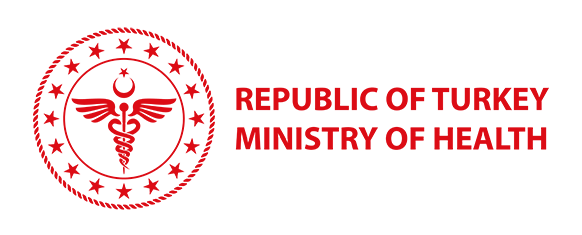COVID 19 and The Examination of Glaucoma Patients
Dear colleagues,
As you know, new data and information regarding Covid-19 contamination and its spread are constantly emerging. Under the light of this data and information, we, as Turkish Ophthalmological Association (TOA), Glaucoma Society, would like to share the issues that should be kept in mind and paid attention during glaucoma examination. General principles such as patient triage, appointment planning, ventilation of the environment, personal protection methods and communication with the patient are also valid during glaucoma examination.
- Slit-lamp biomicroscopy examination: Biomicroscopy is used in most stages during glaucoma examination. We recommend the use of protective barriers mounted on your biomicroscopes. This is available as in ready to use form, or it is possible to prepare large ones from transparent acetate paper. The surface of the protective barrier facing the patient's side should be considered to be contaminated and should be cleaned or replaced at regular intervals. Chin-rest paper should not be used during these periods to make the cleaning of the chin-rest area easier after the examination. The protection will further increase if the patient also uses mask during the biomicroscopic examination. Before the examinations, the doctor should be informed that the doctor will not talk and the patient should be asked to be remained silent at the stage of examination. The areas that the patient's hand and face contacted should be cleaned after each examination.
- Intraocular pressure (IOP) measurements: There is no clear data on IOP measurements. There are some who continue to use non-contact and contact tonometer. On the other hand, there are data suggesting that the tear micro-aerosol particles are dispersed in the environment and can stay suspended in the air for 3 to 8 hours during the measurements of IOP with a non-contact air tonometer (1-4). Thus, some suggest that these particles may pose risk for the spread of the disease and non-contact tonometers should not be used temporarily in endemic regions (3,4). During contact tonometer measurements, it is recommended that the applanation probe must be changed for each case and should be sterilized with ethylene oxide, or wiped with 70% alcohol after each use and used again after drying in room temperature (5). Since Covid-19 is an enveloped virus, it is stated that cleaning with alcohol will be effective. It is possible to reach detailed information about tonometer disinfection methods from Junk A et al.'s paper (5). It is extremely important that the person doing the cleaning must use gloves during the cleaning process of the probe. Other alternative methods that we recommend for IOP measurement are to use Tonopen by changing the sheath for each case, or to use a rebound tonometer by changing the probe.
- Gonioscopy: Before the gonioscopic examination, it is necessary to follow the biomicroscopic examination rules stated above. The physician must use gloves while performing the gonioscopic examination. Goniolens should not be reused without disinfection. The American Academy of Ophthalmology, the National Society to Prevent Blindness and the Contact Lens Association of Ophthalmologists specified the principles for disinfecting goniolens in 1988. This group proposes to clean the contact surface with alcohol sponges after reversing the goniolens. For additional protection, it is stated that the lens can be reused after filling the concave contact surface with 1/10 concentration of bleach, waiting for 5 minutes and then rinsing with water. This way, the contact surface is cleaned and the antireflective coating on the front surface is not damaged. Some manufacturers recommend washing the lenses with 2% glutaraldehyde or 1/10 concentration of bleach. Most lenses are suitable for gas sterilization. Some glass lenses can also be sterilized using an autoclave. In cases that are not necessary, postponing the gonioscopic examination during the pandemic might be considered. Instead, anterior segment OCT, non-contact anterior segment imaging and angle imaging methods can be used.
- Pachymetry: During this period, we recommend optical pachymetry methods instead of ultrasonic pachymetry, if possible. If ultrasonic pachymetry has to be performed, the probe should be cleaned with alcohol after each measurement, similar to that of the applanation probe.
- Other Glaucoma Procedures: In cases that have been previously operated, it is of utmost importance that the staff should not contact the materials like forceps, syringes and some special lenses that are used during office based procedures such as suture removal, suture adjustment, suturolisis and subconjunctival injection. We also recommend that the issues described in the gonioscopy section must be followed during applications like laser iridotomy or laser trabeculoplasty. After each use of devices such as visual field and OCT, care should be taken to clean the areas of contact with the patient's face and hands.
Note: These suggestions are subject to change as new information and data emerge regarding the subjects mentioned in this text.
References
1.Britt JM, Clifton BC, Barnebey HS, et al. Microaerosol Formation in Noncontact ‘Air-Puff’ Tonometry. Arch Ophthalmol 1991;109:225-8.
2.Khanna RC, Honavar SG. All Eyes on Coronavirus – What do We Need to Know as Ophthjalmologists Indian Journal of Ophthalmology, 2020;4:549-53.
3.Dorelmalen NV, et al. Aerosol and Surface Stability of Sars-Cov-2 as Compared withs SARA-Cov-1.
4.Lai TH, et al. Stepping Up Infection Control Measures in Ophthalmology During the Novel Coronavirus Outbreak: An Experience from Hong Kong.
5.Junk AK ve ark. Disinfection of Tonometers. Ophthalmology 2017; 12:1867-75.
Sincerely,
Turkish Ophthalmological Association, Glaucoma Society




